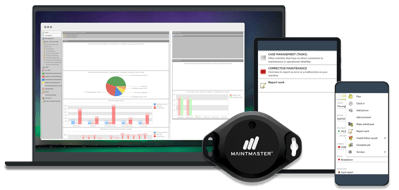Staffan Bergström is one of MaintMasters’ most appreciated coworkers. He’s worked as a maintenance manager for many years, which is one of the reasons for his good understanding of maintenance and everyone who works with it. He also has a big heart and spreads a lot of warmth and happiness, both at MaintMaster and in maintenance departments. This is his story.
Working as a maintenance manager covers a lot of different areas. It’s interesting and inspiring, but can also be strenuous. Everything that doesn’t have an allocated place in an organization ends up in your lap.
The role of a maintenance manager or supervisor is often underestimated by those who haven’t been there. Those of us who work in the role often have a background in their company and get a push upwards.
Viewing challenges as organizational demands
The career path is good, but the basis of our training is in mechanical engineering, electrics, or technology. It’s not common to have a background in economics or logistics.
However, commonsense will take you far. But to manage a maintenance department you need systematic methods and inspiring coworkers who understand that documentation is just as important as maintaining equipment.
To understand the challenges, you need to look at them as demands from different parts of the organization.
Production
- Wants to know how their equipment works. Should ideally be able to predict and prevent the problems that may arise. But of course, without interrupting production.
- Full control so that spare parts are in the stockroom when needed.
- Maintenance must be done when there’s no production, no matter how many shifts are running.
Maintenance technicians:
- Skills to help most people and an ability to reason about problems and faults they face in everyday life.
- Makes sure there’s time in production to perform necessary preventive and corrective maintenance.
- Makes sure all good-to-have spare parts are in the stockroom and available when needed.
Management
- Understands the economic situation and adjusts the business accordingly.
- Keeps tied-up capital to a minimum; does not have more inventory than necessary.
- Minimizes costs and keeps the lowest possible workforce.
- Has the right skills in place at short notice, around the clock.
Staffan has also learned the true value of documentation. Here are a few cases he recalls:
- At a meeting with production, the manager is upset about Line 1 because there was downtime all day yesterday. For the last 8 weeks, operator maintenance was not performed and nor was the monthly service from the maintenance department. The reason for the lack of maintenance was the current production mode, which allowed no time to shut down the equipment. Yesterday’s downtime was a consequence of this.
- A production manager wants a meeting with me. One of his lines is not producing as it should, and he needs help. They’ve increased production and hired several new operators to reach their new goals. Suddenly the machine stopped working properly. Together, we take a look at the problems over the last two months and note that 70% of the downtime is related to changeovers between products. The completion codes used show Handling, which came as a surprise for the production manager. We decided to go through the instructions and documentation for changeovers, together with the operators and maintenance managers.
- A colleague from production tells me that we’re not allowed to invest in the new machine that was supposed to replace the old one that’s been in use since the early 70s. It paid for itself long ago, so now using it is ‘free’. Some electrical work, air and a few regular tweaks from maintenance is all it takes to keep it running. According to management. But my colleague and I have a feeling that the machine costs us a lot more, so we investigate spare part costs, the relationship between preventive and corrective maintenance, and logged scrap and rework. We also talk to operators and ask them about time spent monitoring and restarting the machine. They don’t know but say it’s a lot, so we agree to check. For two weeks, all operators must log every break down, no matter how small. At the follow-up meeting, we summarize the information and present it to management. Not surprisingly, the machine costs us more than we save, and every time we run it, we loose money.
If you’re a maintenance manager or work in some other way with maintenance, you probably recognize some of this. I’ve been in similar situations with different companies many times. Instead of not having answers to management’s questions, I quickly learned the importance of documentation. Once we document, we can use facts to make improvements.
What made it easy for me in all 3 of these examples was the great team of motivated personnel I work with who understood that documentation is just as important as practical action. Most of them documented their work according to rules and instructions, and worktime, downtime, spare parts and primary causes were logged. Inviting production and making information transparent and accessible made it easier for everyone to monitor their departments’ situation and act more quickly and appropriately.
These days, I work with maintenance and maintenance systems at our customers every day. I naturally think MaintMaster is a brilliant system for documenting maintenance tasks.
But long before MaintMaster, I realized the great benefit of using an easy-to-handle system. That’s the main reason I work at MaintMaster today, and has been for the last 11 years…






